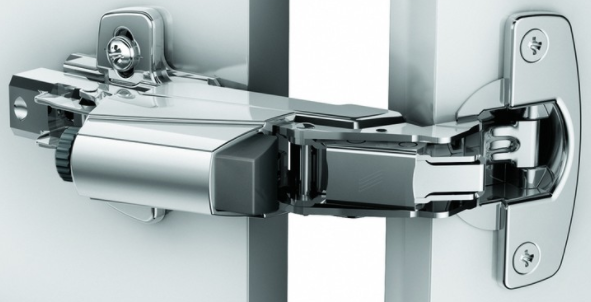A Groundbreaking Process for Hinge Pins
Back in 2015, technicians and sales representatives from a manufacturer of hinges for a full range of kitchen cabinetry turned to Delta Neo to solve a recurring malfunction affecting their hinges fitted with damper systems. These hinges were supposed to improve the day-to-day comfort of end-customers by automatically closing doors and drawers quietly and softly. But up to that point, no supplier had been able to find the cause – much less the solution – to this malfunction.
Irrespective of how many times the doors were opened and closed and therefore how many times the hinges were used, some dampers leaked oil, negating their functionality and staining the cabinetry.
Like all dampers, they consist of a return spring and a piston rod (stiff metal pin connected to a circular base) in a small oil-filled reservoir. The piston glides through this reservoir when the spring is compressed or released, causing the volume of oil to vary according to the pressure exerted and the desired speed of action. It was during these movements that this sealing defect became apparent.
Delta Neo resolved to investigate this seemingly unsolvable problem.
Our engineering department and technical teams began, over the course of several months, to carry out some 100 tests on existing hinges. They concluded that the oil leak was linked to the piston manufacturing process, specifically of the piston rod, which also had a tendency to bend and jam the mechanism.
A twofold challenge for Delta Neo to solve in order to accomplish both qualitative and technical improvements in the operation of the dampers without losing sight of the goal to keep mass production (more than 20 million parts to be produced per year) costs the same as for the existing solution.
After much theorising, research and experimentation, the engineering department came up with the idea of making the rod from a different material. The team then set out to find THE right wire, in the most standard version possible, and began tests on a multitude of different materials while making sure to respect the dimensional and technological properties of the existing specifications. But nothing worked: Even though slight improvements were recorded with some of the selected materials, the defect lingered to such a random degree that 100% success couldn’t be guaranteed.
Then a new idea arose: couldn’t these problems be traced back to the surface quality of the pin’s material rather than the innate properties?
New tests, prototypes and pre-production runs were attempted using an innovative process: Taking a wire with a larger diameter and twice the strength required by the specifications, the decision was made to remove a small surplus of material (swarf) along with surface defects (tiny craters) on the wire, these irregularities seemingly having been created during wire drawing. The ultimate goal was to achieve a perfect surface finish and satisfactory strength while keeping the final dimensional tolerances required for the pin to fit properly into the piston.
The project took more than two years to complete in collaboration with the client, including process development, material supply and machine design. Delta Neo’s years of experience in wire working played a critical role in demonstrating the relevance of this unexpected process and having it approved.
The current focus is ramping up production to an industrial scale, with a major investment in a dedicated machine. Delta Neo’s teams are proud to now be able to add this process to their already long list of atypical technological solutions and to be in a position in the short term to offer it as ‘standard’ to all manufacturers of damper hinges, whatever their field of use (automotive, furniture, household equipment and more).





